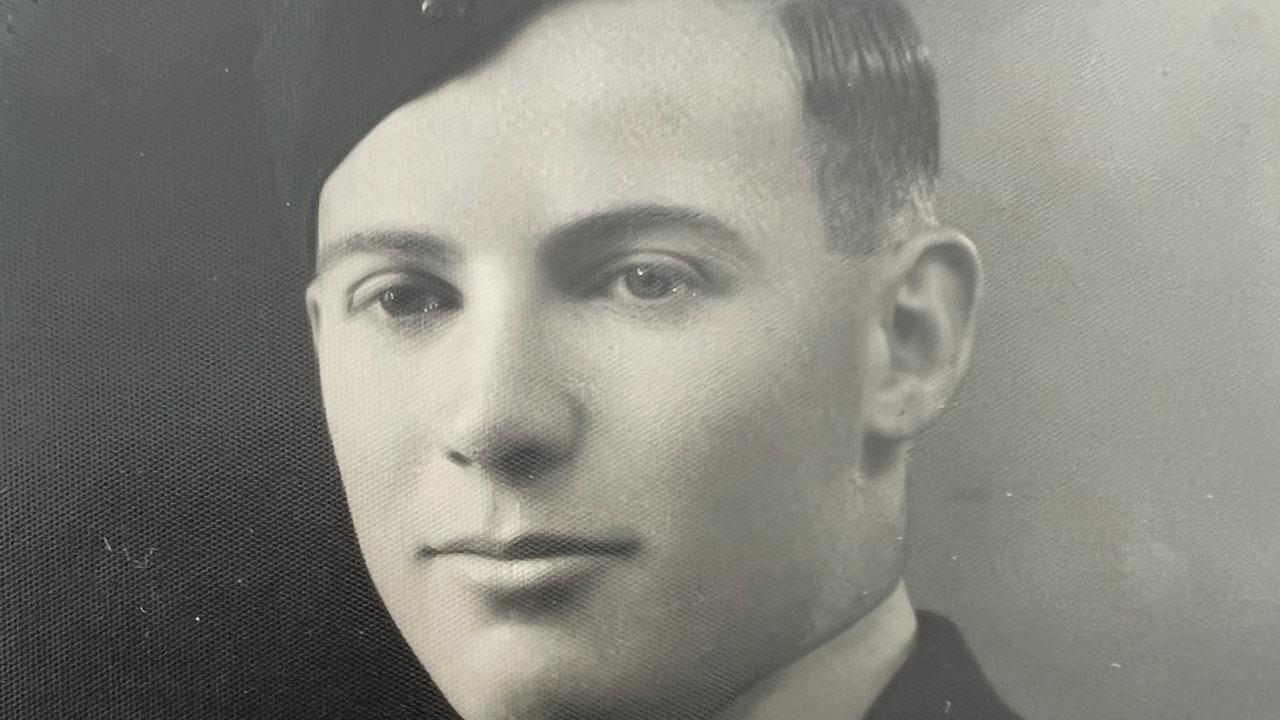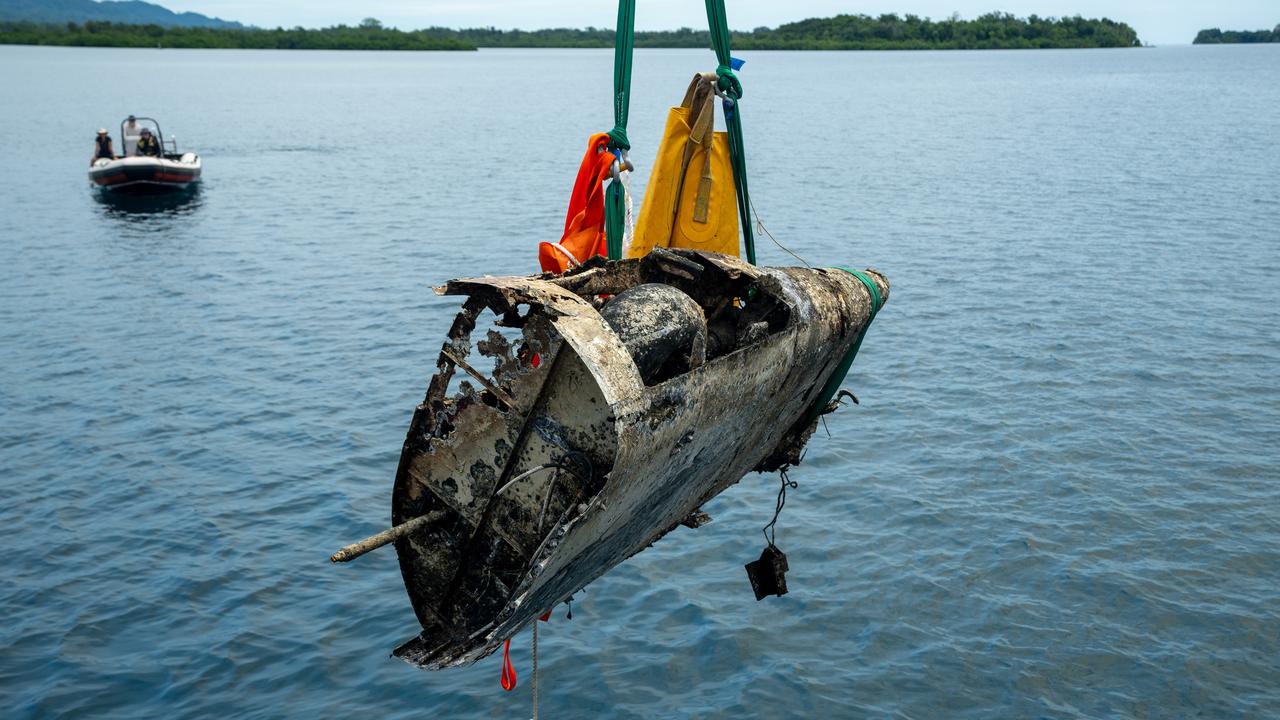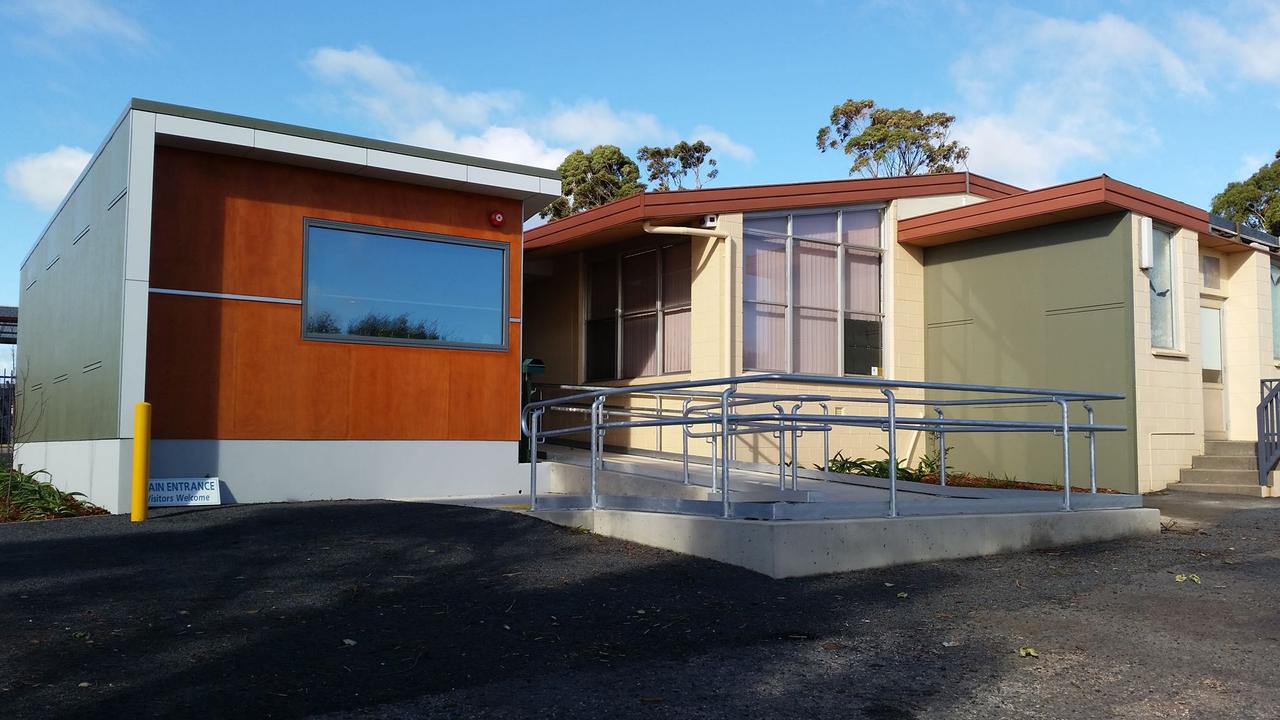Launceston-born WWII Flight Sergeant Harley Joseph Williams honoured
What happened to Harley Joseph Williams has been a mystery since WWII after he and his RAAF crew members were reported missing. But last year, the plane wreckage was found.

Tasmania
Don't miss out on the headlines from Tasmania. Followed categories will be added to My News.
Don Williams waited almost 80 years for closure to the heartbreaking story of what happened to his older brother Harley, an Australian airman who went missing in World War II after a plane crash.
At the height of the war in 1943, the Royal Australian Air Force (RAAF) No. 100 Squadron Beaufort Bomber A9-374 was reported missing after being involved in attacks on Japanese forces located at Gasmata, on the island of New Britain, in the then Australian territory of New Guinea (now Papua New Guinea).
A young Tasmanian man, Flight Sergeant Harley Joseph Williams, was one of the four crew members on that aircraft. Born in Launceston, Williams had worked as a spare parts salesman before joining the RAAF in 1941.
Around two years later - when he went missing - Harley’s brother Don was 14.
“He had a very good personality and was very energetic. He was very happy working as a salesman and happy when he joined the RAAF,” Mr Williams, now aged 95, recalls.
“I was six years younger than him, so I don’t remember a great amount, unfortunately.”

Late last year, the RAAF located plane wreckage off the coast of Gasmata in Papua New Guinea, about 2.9km west of Gasmata airfield. Investigations conducted in January 2024 formally identified the aircraft as the Beaufort Bomber A9-374.
On Saturday, a commemorative service was held at the RAAF Base Point Cook in Victoria to honour Sgt Williams, the other three crew members, and also those who were on Beaufort A9-186 - the wreckage of which was also found off the coast of Gasmata in late 2020.
Don Williams, from Devonport, and other relatives of his brother Sgt Williams were at the service.
“It was a very emotional day for me, and I’m happy that they finally found a resting place,” he said.
“Everyone’s at peace now.”
Sgt Williams’ niece, Janet Allen, was also at the event.
“It was just like closure,” Ms Allen said.
“Grandma [Harley’s mother] was always upset that she never ever knew what happened or anything else.”

RAAF Chief Air Marshal Stephen Chappell said the identification of the plane Sgt Williams was on was confirmed earlier this year.
“The wreckage of A9-374 is dispersed over a large area in approximately 16m of water, which meant positively identifying the remains of the aircraft after 80 years took considerable time, effort and teamwork,” Air Marshall Chappell said.
“The mission involved the use of specialist divers and maritime archaeologists who worked on a complex site featuring heavily damaged wreckage that was covered in layers of sediment and marine growth.
“I offer my heartfelt thanks to all involved in this significant mission; it is especially comforting for the families of the four aviators lost with their aircraft to know at last what happened to their loved ones and to learn their final resting place.
“No further recovery is planned for this challenging crash site, but we continue to strive to account for all our missing service personnel as part of our commitment to honouring their service and sacrifice for our nation.”
The other three men on A9-374 were Flight Lieutenant Roy Herbert Woollacott, Flight Sergeant William Theodore Pedler, and Flight Sergeant James Albert Sugg.
Dr Andrew Forrest from Fortescue Metals Group and the Minderoo Foundation sponsored the missions that led to the positive identification of the two Beauforts. The aircrafts’ recovery had the full support of all levels of the PNG Government.
Originally published as Launceston-born WWII Flight Sergeant Harley Joseph Williams honoured






